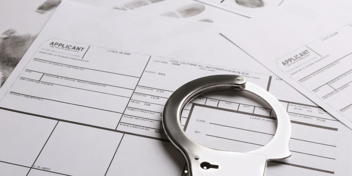It’s crucial for employers to verify the employment eligibility of their workforce, both to comply with federal and state laws and to maintain a reputable business operation. With E-Verify from National Crime Search, the employment verification process has been made simpler, more efficient and more reliable.
In collaboration with Form I-9 management, E-Verify allows employers to cross-check an employee's information against millions of government records, ensuring they are authorized to work in the U.S. Whether you are hiring domestically or from abroad, these tools are indispensable in confirming an applicant's employment eligibility.
Most E-Verify submissions are clear and return results quickly, but what if you receive a Further Action Notice because your E-Verify case received a Tentative Nonconfirmation (mismatch) result? Don’t panic! A mismatch case result does not necessarily mean the employee is not authorized to work in the United States.
Let’s explore what happens when employers receive a Further Action Notice because an E-Verify case received a Tentative Nonconfirmation (mismatch) result.
What is a Tentative Nonconfirmation (Mismatch)?
A mismatch means that the information the employer entered into E-Verify from the employee’s Form I-9 does not match records available to the Department of Homeland Security (DHS) and/or Social Security Administration (SSA). Employers must inform employees that their E-Verify case received a mismatch. It is possible to receive a dual mismatch, which means the case received a mismatch result from both SSA and DHS.
What Happens After a Case Receives a Mismatch Result?
Within 10 federal government working days after E-Verify issues the Further Action Notice:
- The employer must notify the employee about a mismatch result and should ensure that the employee’s information was entered correctly into E-Verify.
- The employer notifies the employer whether they will take action to begin resolving the mismatch.
- If the employee takes action, the employer refers the case to SSA and/or DHS, and the employee calls DHS within eight federal government working days.
- The employer receives updated results and closes the case.
- If the employee does not inform the employer of their decision or decides not to take action, the employer may terminate their employment.
For additional explanation of the next steps in the mismatch resolution process, contact National Crime Search.
Tips to Avoid a Mismatch Case Result:
- Make sure the employee’s documents and records are up-to-date before they complete the Form I-9.
- The employee should inform the SSA if they have changed their name.
- If there is a spelling error on the employee’s document, they should contact the agency that issued the document to correct the error.
- If the date of birth on the employee’s document is wrong, they should contact the agency that issued the document to correct the error.
Electronic Form I-9 & E-Verify Management
NCS can help you comply with the law with our easy-to-use system that guides and stores new hire Form I-9s online and returns E-Verify results instantly.





